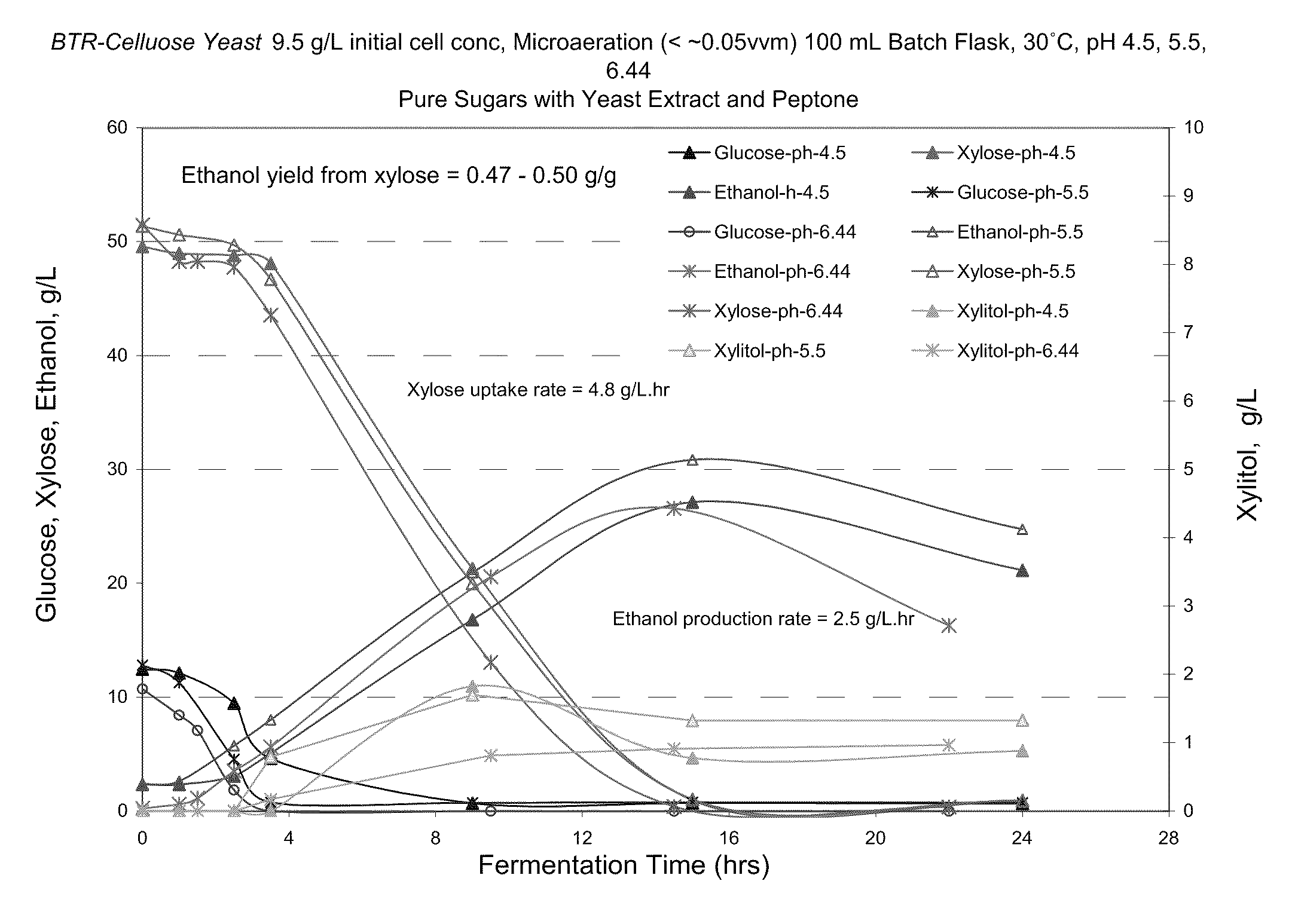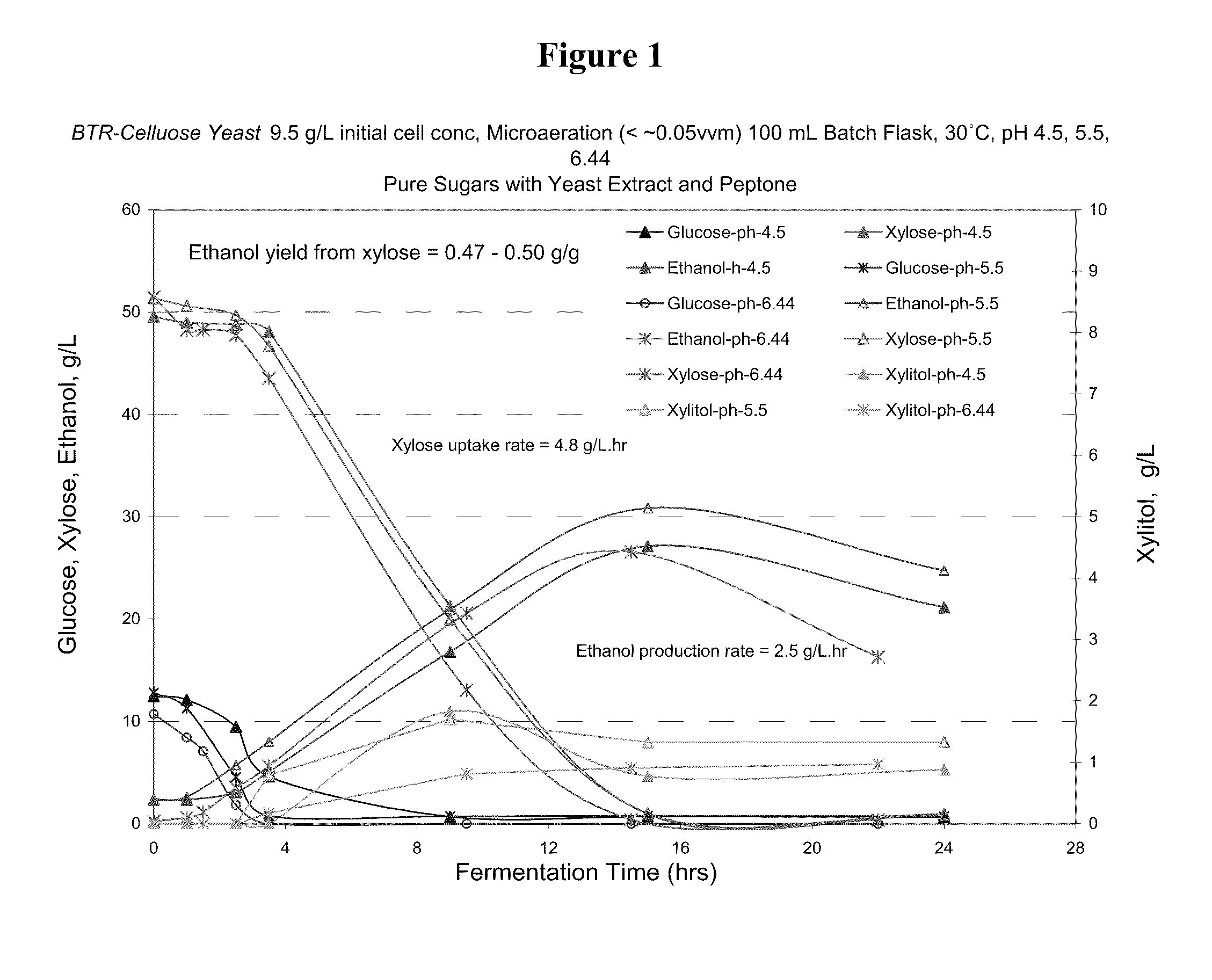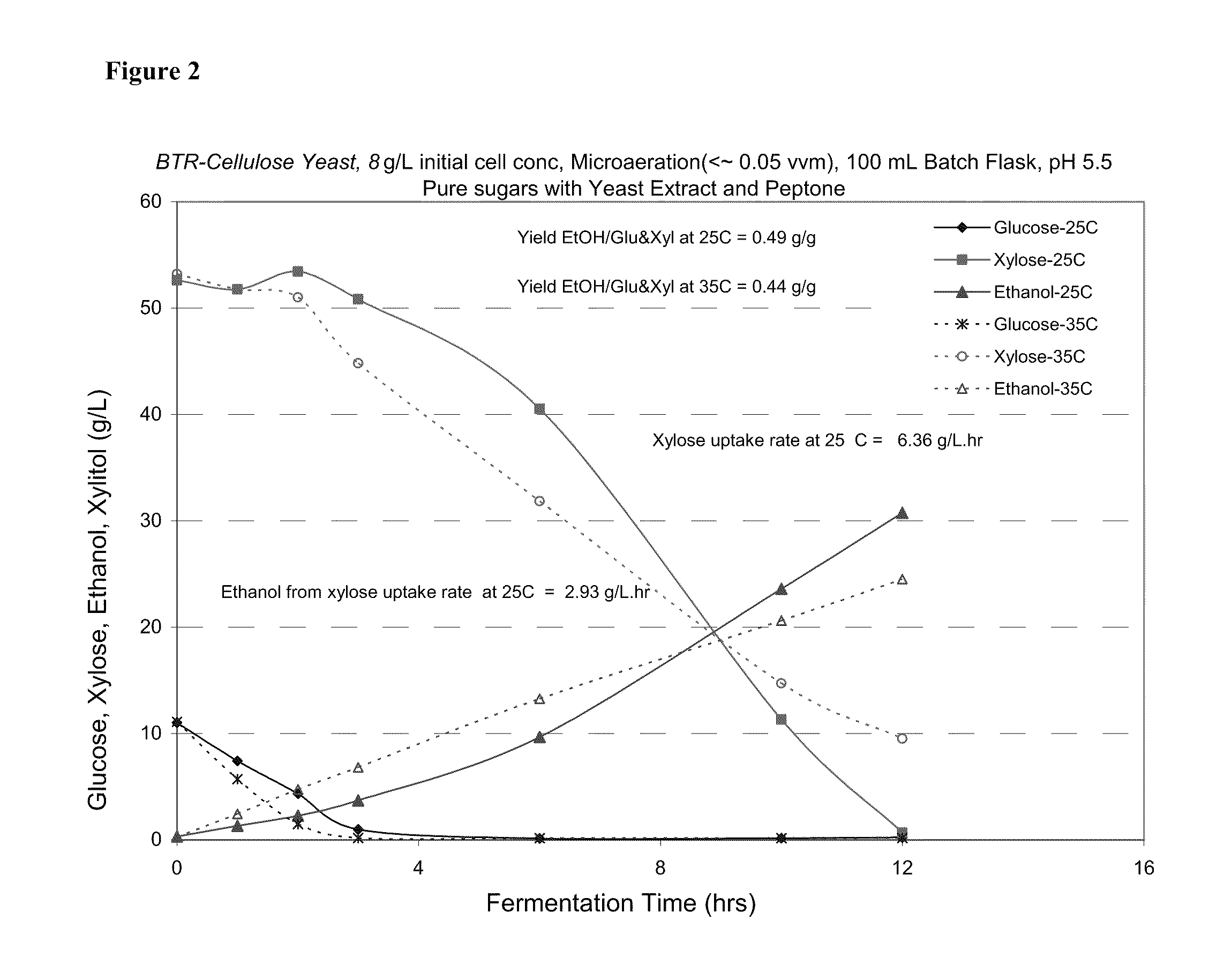Novel ethanol-producing yeast
a technology of ethanol-producing yeast and ethanol, which is applied in the field of industrially useful microorganisms, can solve the problems of increasing pressure, less desirable or more challenging use, and crops that will be too expensive in the future to be used as feedstocks
- Summary
- Abstract
- Description
- Claims
- Application Information
AI Technical Summary
Problems solved by technology
Method used
Image
Examples
example 1
Isolation of a Xylose-Fermenting Pichia Strain
[0033]The following were employed in the isolation of the xylose-fermenting Pichia strain: Yeast Nitrogen Base (YNB) which contains salts, vitamins and trace elements as follows: potassium phosphate (1000 mg / L), inositol (2 mg / L), copper sulfate (0.04 mg / L), magnesium sulfate (500 mg / L), niacin (0.4 mg / L), potassium iodide (0.1 mg / L), sodium chloride (100 mg / L), PAA (0.2 mg / L), ferric chloride (0.2 mg / L), calcium chloride (100 mg / L), pyridoxine (0.4 mg / L), manganese sulfate (0.4 mg / L), biotin (0.002 mg / L), riboflavin (0.2 mg / L), sodium molybdate (0.2 mg / L), pantothenate, calcium (0.4 mg / L), thiamine (0.4 mg / L), zinc sulfate (0.4 mg / L), folic acid (0.002 mg / L), boric acid (0.5 mg / L); YNB without amino acids (YNB w / o AA) which contains ammonium sulphate as a nitrogen source and is used in preparing carbohydrate selective media; and YNB without amino acids and without ammonium sulphate (YNB w / o AA, w / o AS) which contains no carbohydrate or ...
example 2
The Effect of pH
[0057]A pH Study was performed to determine optimal operating pH of glucose / xylose fermentation using the yeast of Example 1. The medium contained glucose (10 g / L) and xylose (50 g / L). Both anaerobic and slightly aerobic conditions were tested. A pH of 5.5 resulted in the highest yield of ethanol from xylose (0.5 g / g) in the passively aerated tests. For strict anaerobic studies, pH of 6.4 resulted in the highest yield of ethanol from glucose and xylose.
[0058]The operating parameters were as follows: temperature was 30° C., pH varied (4.5, 5.5, 6.4), initial cell concentration was 9-9.5 g / L d.b., batch fermentation (100 ml). The medium was pure sugars with yeast extract and peptone.
[0059]Results for microaeration (<0.05 vvm) were obtained from the rubber-stoppered batch container through a hole in hole in the rubber stopper that was covered with foil. The batch was sampled at times: 0, 1, 2.5, 3.5, 9, 15 and 24 hrs. High uptake rates of xylose (4.8-5.0 g / L.hr) and hig...
example 3
The Effect of Temperature
[0060]A temperature study was performed to determine optimal operating temperature of glucose / xylose fermentation using the yeast of Example 1. The medium contained glucose (10 g / L) and xylose (50 g / L). Both anaerobic and passive aerobic conditions were tested. A temperature of 25° C. resulted in the most rapid fermentation, although fermentation at 35° C. was viable. For the aerobic study, yields of ethanol from glucose and xylose reached 0.49 g / g. For strict anaerobic studies, the ethanol yield from glucose and xylose was slightly higher at 25° C. as compared to 35° C.; however, xylose was used quicker in the latter.
[0061]The operating parameters used in the study were as follows: temperature of 25° C. and 35° C., pH of 5.5, initial cell concentration of 8 g / L d.b. and batch flask fermentation (100 ml). The medium was pure sugars with yeast extract and peptone.
[0062]The results for the microaeration (<0.05 vvm) fermentation were obtained as described above...
PUM
 Login to View More
Login to View More Abstract
Description
Claims
Application Information
 Login to View More
Login to View More - R&D
- Intellectual Property
- Life Sciences
- Materials
- Tech Scout
- Unparalleled Data Quality
- Higher Quality Content
- 60% Fewer Hallucinations
Browse by: Latest US Patents, China's latest patents, Technical Efficacy Thesaurus, Application Domain, Technology Topic, Popular Technical Reports.
© 2025 PatSnap. All rights reserved.Legal|Privacy policy|Modern Slavery Act Transparency Statement|Sitemap|About US| Contact US: help@patsnap.com



